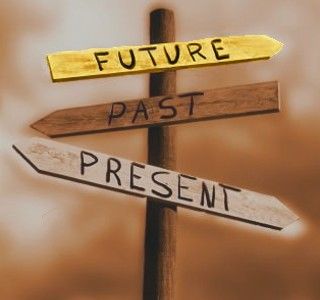
Midlife
The Reminiscence Bump
People looking back on life remember their twenties best
Posted October 24, 2012

As people construct a life narrative, researchers have found, they tend to remember more events from the teens and twenties than from any other time. It’s called the “reminiscence bump.” According to psychologist Dan McAdams of Northwestern University, events from this period loom so large because it’s when people are most preoccupied with forming an identity. “Identity is an internalized life story,” McAdams wrote in a 2001 article called “The Psychology of Life Stories.” This internalized life story helps make sense of one’s own life, he wrote, “explaining why it is that I am sullen with my father and euphoric with my friends and how it happened – step by step, scene by scene – that I went from being a born-again Christian who loved baseball to an agnostic social psychologist.” (I’m pretty sure he’s talking about his own life story here; what I’m less sure of is whether it’s his agnosticism or his profession that he sees as a surprising departure from loving baseball.)
Self-stories keep evolving as people grow older. But the reminiscence bump persists, with events from the twenties remaining front and center. In 1990, Peter Martin of the University of Georgia and Michael Smyer of Penn State asked 78 middle-aged and older adults to reflect on their lives. From the perspective of their fifties and sixties, they reported, people tended to remember events from their twenties and early thirties as most significant. Those were the years when they made the friends they would keep for the rest of their lives, met the people they would marry, chose the careers they would stick with.
I wonder whether this same retrospective feeling about the twenties and early thirties will occur when Millennials reach middle age. They will almost certainly have lived more meandering lives than did Martin and Smyer’s subjects, who were born between 1898 and 1923. If, in the year 2045, a sixtysomething looks back over a life that included marriage, divorce, remarriage; residence in four or five different states and a few foreign countries; an undergraduate degree in one field and, five or ten years later, a graduate degree in something else; changes in career direction two or three different times – if, in other words, a Millennial lives the kind of fluid life that is becoming more common, will there really be the same feeling that things that happened in the twenties were absolutely pivotal?
It’s hard to say for sure. But since some Baby Boomers have already lived some pretty fluid lives, one hint at what Millennials will be like in middle age can be found by looking at what today’s middle-aged adults were like when we were in our twenties, and doing a little projecting. One such study looked at a national opinion poll conducted in 1976, when Baby Boomers were in their twenties (I was 23 that year), and compared the results to a similar study conducted nearly twenty years earlier, in 1957, when the twentysomethings in the survey were born at the height of the Depression (younger than my parents, about the age of my youngest aunt). In the 1957 survey, young people said that when they were troubled about something, they usually turned to their husbands or wives for solace. But in 1976, young people talked over their problems not only with spouses but also with friends, colleagues, and mental health professionals. This combined faith in psychotherapy and in the value of airing one’s personal angst – it seems very Millennial-ish to me. Maybe that’s partly why Baby Boomers get along so well with our twentysomething children; we understand our kids’ impulse to blog, tweet, and Tumbl their every problem, since when we were their age, we did a 20th-century version of that, too.
But for all our unloading of concerns onto whomever would listen, Boomers in our twenties were actually more worried about our futures than the previous generation had been at that age. Maybe all that over-sharing just exacerbated our worries. Or maybe historical circumstances were to blame; the investigators pointed out that the twentysomethings of 1976, unlike their predecessors, were kids “raised in affluence who found themselves in their 20s in entry-level jobs in a contracting economy.” Sound familiar? That description of Boomers in the seventies—stressed out about the future because we couldn’t get the jobs we wanted—could just as easily have been yanked from a newspaper article about Millennials in the 2010s. This might be another reason so many twentysomethings get along with their parents: each cohort has had to face, at the dawn of their adulthood, the prospect of diminishing expectations.

